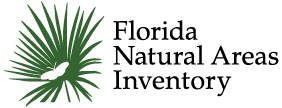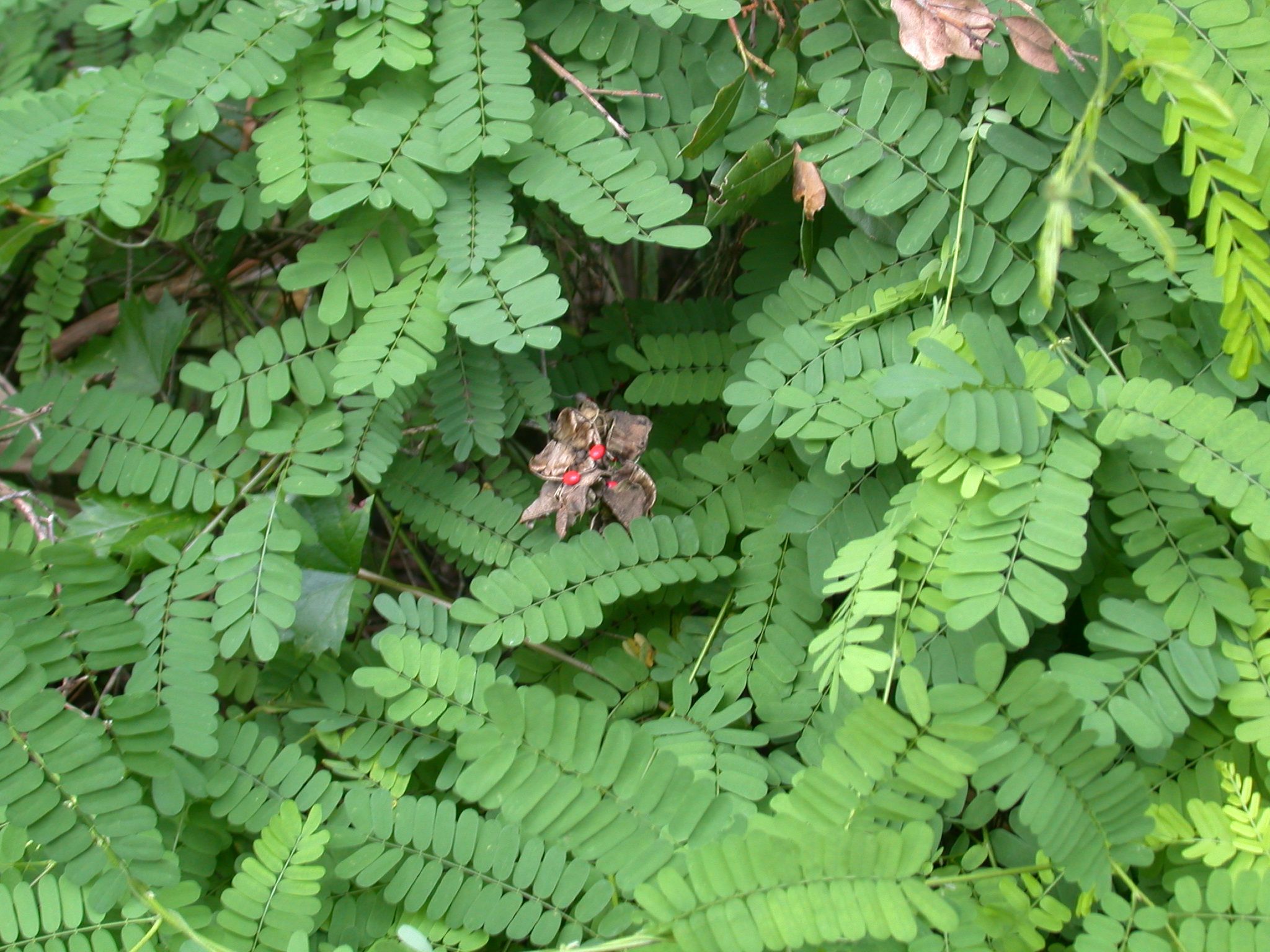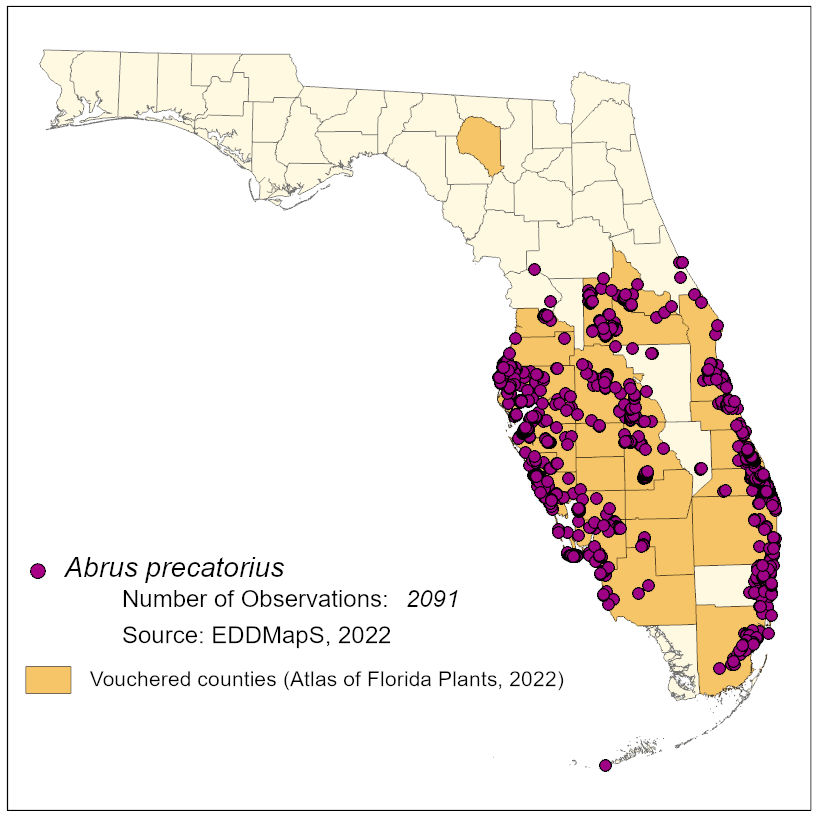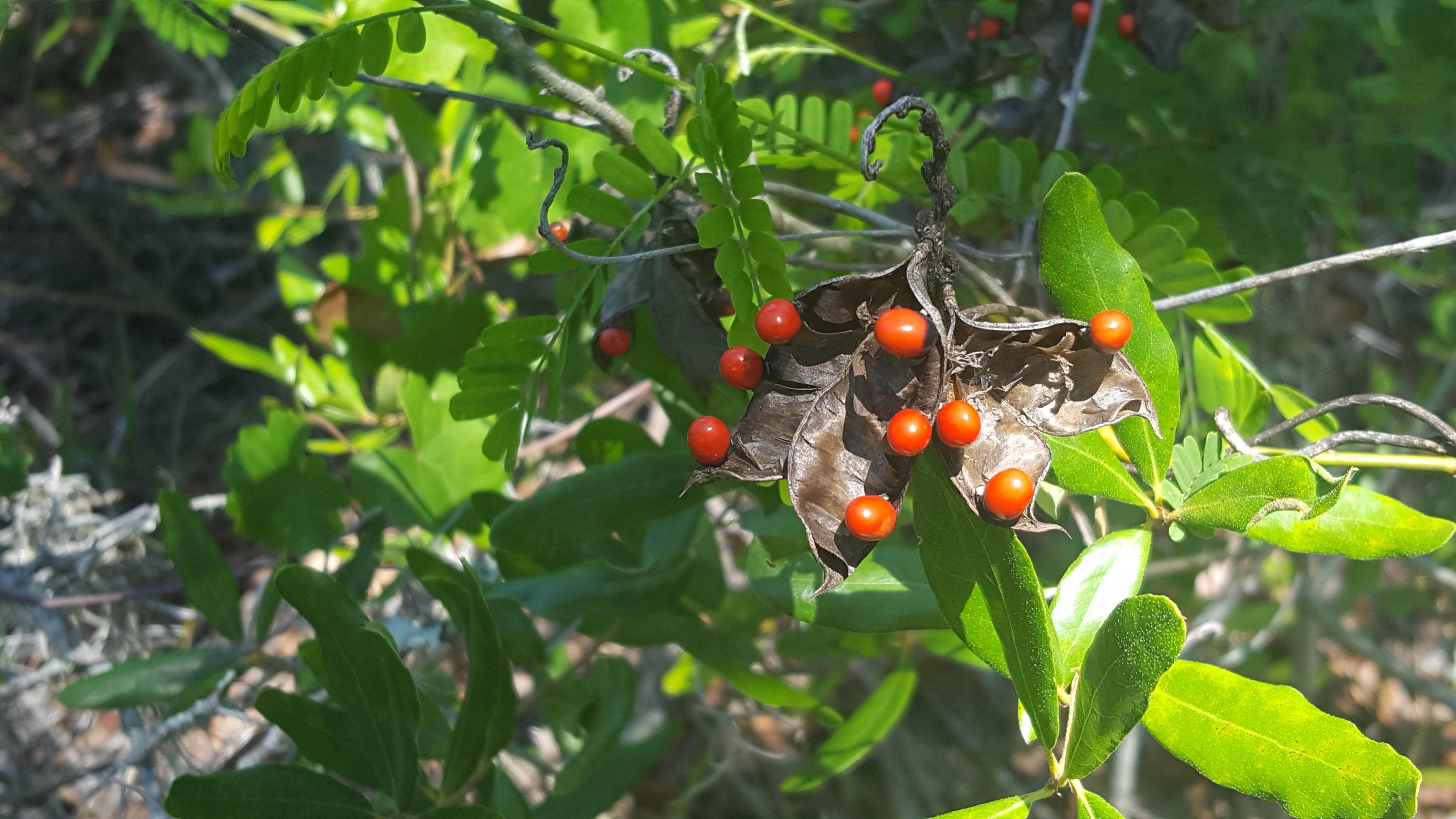Abrus precatorius


Common Name: rosary pea
Family: Fabaceae
Common Synonyms: Abrus abrus
USDA Hardiness Zone: 11
Growth Habit: Vine
Origin: India
FISC Category: 1
FDACS Listed Noxious Weed: Yes
Introduction Date: pre-1932
IFAS Assessment:

High-climbing, perennial, woody vine with slender herbaceous branches. Alternate, stalked leaves, 5-13 cm long, even-pinnately compound with 5-15 pairs of oblong leaflets, to 1.8 cm long with entire margins. Small pea-shaped flowers, white, pink or reddish, in clusters at leaf axils. Flowers in summer. Fruit a short, oblong pod, with 3-8 shiny hard seeds, 6-7 mm long, red with black bases. Seeds extremely poisonous to livestock and humans.
Able to colonize a wide variety of habitats - xeric hammock, coastal uplands, flatwoods, hydric hammock, disturbed sites
Established in central and south Florida. Difficult to eradicate and increases following fire. Seeds dispersed by birds.

Remove seed pods if possible. Site must be revisited several times to pull seedlings. Fall applications most effective.
IFAS, Center for Aquatic and Invasive Plants. 2013. Rosary Pea. http://plants.ifas.ufl.edu/node/23#more. Accessed on December 2, 2013.
Langeland, K.A., J.A. Ferrell, B. Sellers, G.E. MacDonald, and R.K. Stocker. 2011. Integrated management of non-native plants in natural areas of Florida. EDIS publication SP 242. University of Florida, Gainesville, Florida.
Langeland, K.A., H.M. Cherry, C.M. McCormick, K.C. Burks. 2008. Identification and Biology of Non-Native Plants in Florida's Natural Areas-Second Edition. IFAS Publication SP 257. University of Florida, Gainesville.
